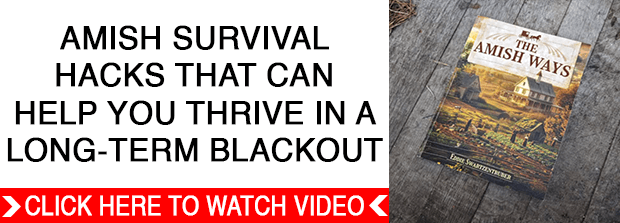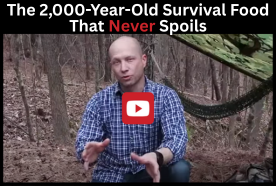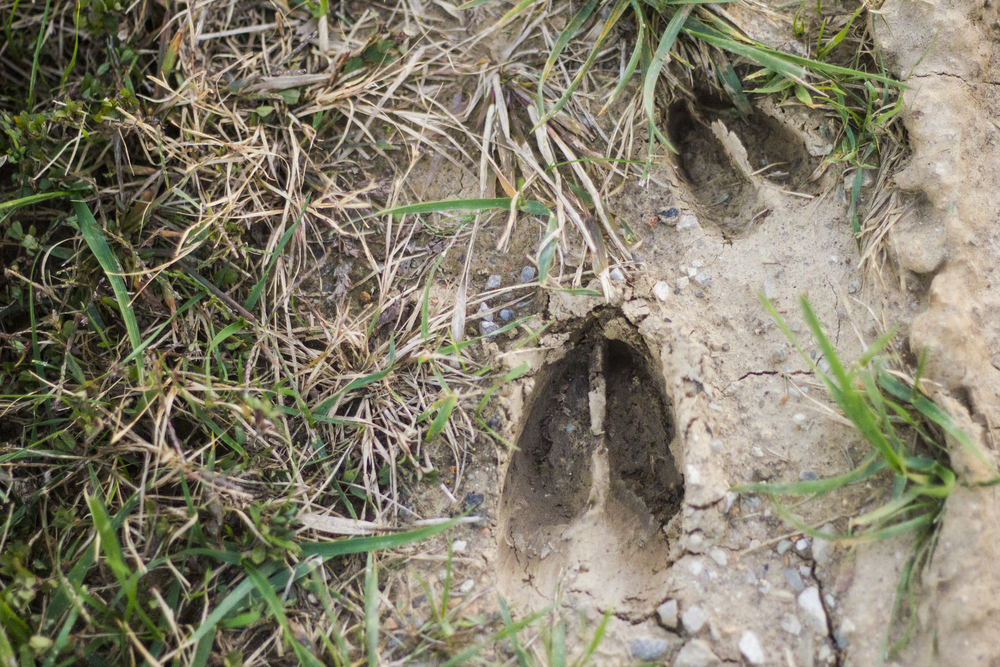Tracking is a truly ancient practice. It predates our species. Tracking has been used by indigenous peoples on every populated continent both to hunt prey for meat, in competition with other humans for resources, and in warfare: humans hunting other humans.
Hunting without tracking is likely is likely a recent development, occurring after the abandonment of the hunter gatherer lifestyle and pastoralism in favor of structured agriculture and the development of cities.
The ancients passed cultural knowledge of tracking largely through apprenticeship, oral tradition and experimentation as trackers learned to track, stalk and hunt. These methods still play an important role in teaching tracking today, but we also have the benefit of books and modern teaching methodology such as the use of aging frames. For survivalists, I recommend reading The Complete Guide to Tracking by Bob Carss (Carss, 1999) and Combat Tracking Guide by John D. Hurth. (Hurth, 2012) But ultimately tracking is best understood by getting out in the dirt and tracking both people and animals with a an experienced tracker.
Spending time in nature is well worthwhile, and you can learn a lot about man by studying nature. You’ll learn a lot about yourself as well. Most people learn that they are capable of enduring a great deal more than they think. They also become acquainted with their limitations, and I think an effective survivalist must understand both their capabilities and limitations.
In my time in the desert I saw wildlife that most folks seldom see in person in the wild. I also saw evidence of man. I saw old military forts, battle sites, military camps, old mining claims, old homesteads, remnants of indigenous dwellings, petroglyphs, arrowheads, pottery sherds and other evidence that an archaeologist would call artifacts and a tracker would call sign.
So what is sign?
Sign is a catchall used for any indication left by the quarry. Tracking is the interpretation of sign.
If you are tracking man, sign can be in the form of tire impressions, footprints, marks left by a hiking stick or trekking poles, rocks pressed into the earth, scuff marks, spent casings, campsites or garbage. If you are tracking animals, it could be footprints, blood, kill sites, scat, burrows, matted grass, or marks made by fur, tail or feathers.
There is No Such Thing as “Leave No Trace”
“Leaving no trace” is a physical impossibility. Any time any terrestrial animal, including homo sapiens, even passes through an area, it leaves sign.
Life is an act of consumption. Animals drink water, eat plants and other animals. Animals build shelters and make and use tools. All of these activities occur in nature and none of them are unique to man. All the indications we leave behind as we travel, eat, drink, process waste, hunt, sleep, make and use tools is all sign.
Judging the Age of Tracks
Tracks tell a proficient tracker many details about the quarry. One of the most important is how long ago the track was made. From the moment a track is made wind, precipitation, humidity, temperature and gravity begin weathering the track.
Perhaps the most methodical way to learn to judge the age of tracks is by constructing aging frames. Aging frames are also used by crime scene investigators to learn to judge the age of bodies on body farms. Trackers don’t just put bodies in aging frames, they put footprints, scat, garbage, bipod and tripod impressions, cartridge cases, blood drops, and all other forms of sign in aging frames. Then they return at predetermined intervals to study them, take photographs and note observations about how the sign ages. Eventually, they get a solid feel for the age of sign in any season in various environments where they have constructed and studied aging frames.
The other way is simply to spend a lot of time tracking, but you would need to track for many lifetimes to learn what you would learn by constructing and studying aging frames.
Track Traps
Track traps are areas where it is pretty much impossible to pass through without leaving sign. A few examples of track traps are:
- Smooth Mud
- Fresh Snow
- Smooth Sand
- Banks of Streams and Canals
- Roadsides
- Areas of Frost
- Areas of Dew
Trap traps can also be constructed or improved. Border patrol drags rows of tires behind trucks on dusty dirt roads and notes the time. Then, when they drive the road, they know that any footprints in the dragged areas must have been left since they last dragged the road and they can calculate how far the people who left the track could have walked and have a pretty good idea where to search to pick up their trail again.
Track & Footprint Cards
Trackers take photos of footprints and tracks, measure them and keep the data on records called footprint cards or track cards. That way they can calculate shoe size, type of footwear, get an idea of bodyweight, and analyze the quarry’s gate. Footprint cards are for people and track cards are for animals.
Cartridge Casings and Military Sign
Much of the sign I have found has been in the form of spent cartridge casings. It can tell you how your quarry is armed and what they are hunting.
At a remote Arizona battle site between US Cavalry and a band of Apache, I walked parts of the site with archaeologists and military historians. We were able to find 100-year-old sign of the battle that took place in the desert. We could tell where both sides constructed breastworks out of rocks to provide cover. In most cases their spent casings still lay where they were ejected over 100 years ago.
We could tell the Apache emplacements from the US Cavalry emplacements by the caliber of the cartridges, the fact that the Apache used a mixture of arms, while the US Army all used the same caliber weapon, and the fact that the when the troopers had time, they stomped their spend casings with their bootheels so they couldn’t be easily reloaded by the enemy.
The Apache were master trackers and tacticians. Their skill at tracking, counter-tracking, combat and survival enabled them to fight guerrilla campaigns against the vastly superior US Army forces for over 90 years. That’s nearly five generations. Their great-great grandaddy’s were fighting the same war they fought and General Crook only won by using Apache scouts from other bands giving birth to the motto that, “It takes an Apache to catch an Apache.”
Today, you can learn a great deal, even in the field, from cartridge casings and their headstamps. It is also worthwhile to learn the impressions made by the butt plates, bipods and tripods of weapons used by varies forces, the patterns of military footwear, military issue rations issued by different countries, as well as military uniforms, vehicles, aircraft and watercraft.
The survivalist can employ tracking in wilderness, homestead (rural), bugout, get home, exfiltration and escape & evasion scenarios, but don’t overlook the fact that tracking is also useful in urban terrain.
Tracking Improves Situational Awareness
Long before modern gadgets like trail cams, tracking and observation were how man knew who else was in his stomping grounds. As a young man, my main stomping grounds was the Mesquite Wash area of Arizona’s Mazatzal Mountains. I felt like I owned that stretch of desert because nobody else spent as much time there as I did. I knew this for certain because I saw their tracks when they did.
I could tell who visited by the tire tracks footprints and the other sign that they left. When a rancher checked on his cattle, a group of kids would throw a boondocker or someone would camp or hunt, I would go see what they had been up to. People who drink tend to lose pocketknives and other gear, so it was often worth checking out. I knew everyone who frequented my stomping grounds, what vehicles they drove and what firearms they shot. Most folks who wandered into Mesquite wash were hunting or four wheeling. Every so often an old timer would head out here to see if the road still went through to the Four Peaks road, which it no longer did.
Counter-tracking
Counter-tracking is the collective effort of the quarry to thwart the tracker or trackers and has likely existed as long as humans have hunted other humans. Learning them will not only help you lose a tracking party, but it will also make you a more effective tracker.
Some examples of counter-tracking techniques are:
- Wearing Cat’s Paws – Cat’s paws are overshoes, moccasins or sandals with felt or carpet instead of boot tread. They help reduce spoor.
- Carpet Runner – A narrow carpet runner can be carried rolled up until needed and then placed over a track traps with the shaggy side down. You roll-step across it to alter and reduce your trail. A rookie tracker probably won’t recognize the trail for what it is.
- Stone Hopping – Stone hopping is just what it sounds like: walking on stones or other hard surface so you leave less spoor. Small stones will be pushed into the ground, but big ones won’t budge.
- J-Hook – Instead of walking straight into your hide, walk in a “J” pattern so anyone following you will follow your trail past you, making it easier for you to observe or ambush them. Wounded cape buffalo and grizzly bears both use this technique.
- Walk in a Circle – Coyotes and some other intelligent animals will circle back. Circling back on your trail will tell you if someone is following just out of sight. Then you can try to lose them with figure 8’s or boxes or make a “J” hook after you pass a good spot for an ambush.
- Figure 8’s and Boxes – Walking in interconnected figure 8’s or box patterns can confuse a tracking or even scent trackers like dogs because you run over your same track several times concentrating scent and tracks. This makes your exit point harder to find and if they aren’t careful, they’ll walk over your trail.
You can read more about counter tracking in Part 2 of my three-part article on Secure Foot Travel: Getting from A to B After the World Goes Sideways.
Tracking in Urban Terrain
Patrolling is vital to situational awareness whether you are in wilderness, rural or urban terrain. You notice things when you are on foot that you wouldn’t notice while driving in part because of the slower pace. It lets your brain take in details that you would otherwise overlook.
Learn who everyone is in your neighborhood. Print a map, walk your neck of the woods regularly, and take notes. Learn the footprints and tire tread impressions of the locals. As you patrol, observe where you can obtain the resources you might need in an emergency. Where are you going to get medical supplies, firewood, water, food? Where is the best improvised fallout shelter?
People get so used to not tracking in urban terrain that they overlook the obvious, like as tracking in fresh snow. Even someone with no tracking experience should be able to follow tracks in fresh snow.
Look for track traps in your area and make track traps on your property.

Learn to track and you will improve your situational awareness by tapping into an ability that we all have but is largely dormant in most people.
- Learn to interpret sign.
- Watch for, and make or improve, track traps.
- Create track and footprint cards.
- Learn to determine the age of tracks by making and studying aging frames in different environments and seasons.
- Educate yourself about military sign.
- Learn counter-tracking techniques
Learning to track will benefit you, not only in the wilderness, but also in rural and urban environments.






References
Carss, B. (1999). The Complete Guide to Tracking. London: Constable & Robinson Ltd.
Hurth, J. D. (2012). Combat Tracking Guide. Mechanicsburg, PA: Stackpole Books.


